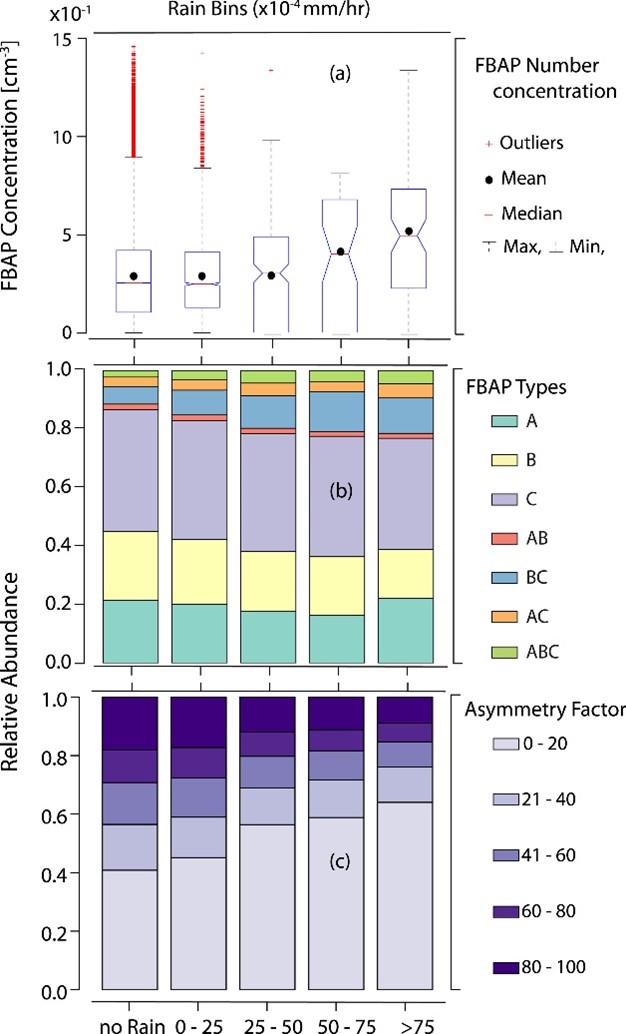Bioaerosol in High-Altitude Mountain Terrain in Colorado
Submitter
Aiken, Allison C
— Los Alamos National Laboratory
Area of Research
Aerosol Processes
Journal Reference
Shawon A, K Benedict, A Gutierrez, and A Aiken. 2025. "Diurnal Trends and Meteorological Factors Influencing the Variability of Fluorescent Bioaerosol in Mt. Crested Butte, Colorado During SAIL." Journal of Geophysical Research: Atmospheres, 130(4), 10.1029/2024JD041186.
Science

Effect of precipitation on FBAP during SAIL. (a) Whisker box plots showing the change in number concentration with precipitation rate. Despite large uncertainties, it is evident that both mean and median increased with increasing precipitation. Panels (b) and (c) represent relative abundance of FBAP of different types and AF, respectively, as functions of the precipitation rate. Relative abundance of BC and ABC increased with the increasing precipitation, and particles tended to become more spherical.
Impact
Diurnal profiles showed increased bioaerosol concentrations in the middle of the day, which trended with increased temperature and solar radiation. Bioaerosols were also found to increase with low relative humidity, high temperature, and at times, precipitation events.Summary
Suspended particles in our atmosphere that come from biological origins, such as bacteria, fungi, and pollen, are called bioaerosol particles. It is important to have a better understanding of their properties, since they can affect energy budgets in the earth system. Most bioaerosols have characteristic fluorescence properties that can be measured in the field and in real-time. A Wideband Integrated Bioaerosol Sensor (WIBS-NEO) was deployed during the U.S. DOE Atmospheric Radiation Measurement (ARM) Surface Atmosphere Integrated Field Laboratory (SAIL) campaign to measure bioaerosols in summer 2022 at Mt. Crested Butte, Colorado, at an altitude of 10,300 ft above sea level. To our knowledge, these are the first high-altitude measurements in North America. Up to 48% of the aerosol particles detected contained biological material with diurnal cycles that became more evident in July through September. Trends with changes in meteorological conditions were observed, indicating temperature, relative humidity and rainfall can affect their properties and concentrations. No trend was observed during transported smoke or dust events, indicating that the most likely sources of bioaerosols were local and/or regional.Keep up with the Atmospheric Observer
Updates on ARM news, events, and opportunities delivered to your inbox
ARM User Profile
ARM welcomes users from all institutions and nations. A free ARM user account is needed to access ARM data.


















